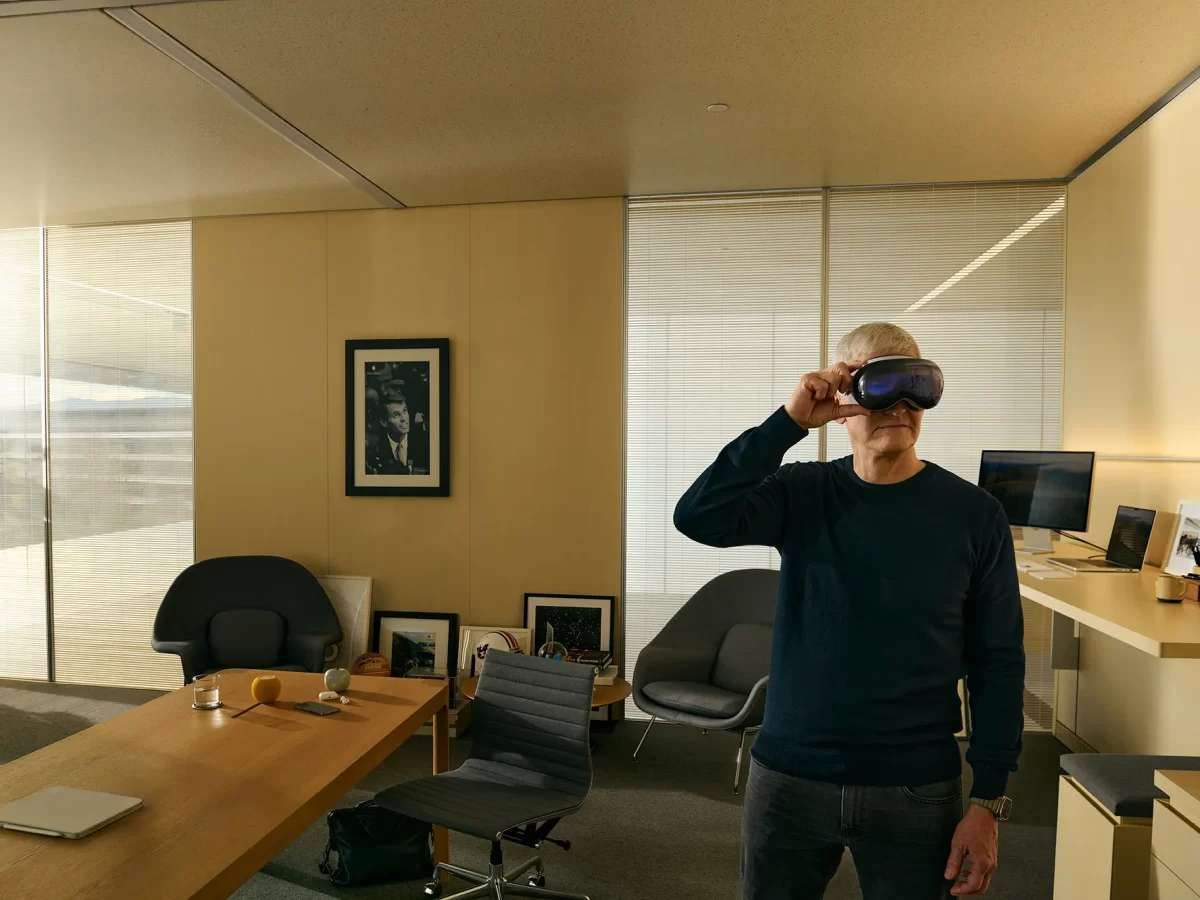The Apple Vision Pro’s $3500 price tag has been controversial, but ultimately, that could be the least of its costs. Apple’s venture into virtual reality isn’t selling you a novelty. It’s not selling you an experience. It is selling you a new, Apple-stamped way of life.
The Apple Vision Pro certainly isn’t the first iteration of virtual reality. Over the past decade as the technology has fluctuated in popularity, tech conglomerates like Google and Meta have given it a try. While they functioned as consoles for immersive experiences and fun video games, Google and Meta’s virtual reality renditions didn’t reach customers as anything more than just a novelty; something you put on for 30 minutes every once in a while, and put back down just as easily. But the Apple Vision Pro is different.
Apple is the lifestyle Mecca of America. Our communication runs through iPhones. Our work runs through MacBooks. Even our exercise is accompanied by an Apple Watch. With each new line of products, Apple inches further and further into our daily lives with its satisfying minimalist interfaces and sleek designs. The Apple Vision Pro is Apple’s leap to annex the rest of your life entirely, to fully integrate its technology with your reality on the most principal levels.
The Apple Vision Pro isn’t marketed as a virtual experience. When you use the headset, it is simply an attachment and an intended enhancement to your reality. Something as simple and human as walking around your house, kicking back and watching television, spending time with your family, or cooking a homemade meal in your kitchen, as shown off in its demos, is intertwined with the ever expanding brand and technology of Apple. The Apple Vision Pro is a worrying move towards the complete blur of the line between virtuality and reality, of using technology or being in the moment. It is a deeply troubling and ill-conceived concept.
Apple intends this. Unlike its virtual reality predecessors, the Vision Pro doesn’t involve a controller. It is completely controlled by your hands. By omitting the controller, Apple is not only flexing an advancement in technology, but also furthering the blur of technology and reality. The holding of a controller and the clicking of buttons, serves as a tether to reality. But, evidently, Apple intends for the Vision Pro to become a staple of everyday life and interaction. You’re not meant to think about using it.
Today, the Apple Vision Pro is far from a finished product. Its application is still limited, its glitches and shortcomings are still apparent. This is only the beginning, however. Apple CEO Tim Cook has been vocal about his belief that Apple Vision Pro will be a future staple of their brand and the world of technology as a whole. Apple will continue to develop the technology, and continue to make it more accessible and practical with different models at lower price points. Apple is all in with the Vision Pro, and hundreds of millions of consumers worldwide will follow them.
As Apple intensifies its marketing of the Apple Vision Pro over the next few years, don’t be tempted by loyalty to the Apple brand, or seduced by its exciting technological innovation. The Vision Pro is the beginning of a trek up a slippery, slippery slope.















